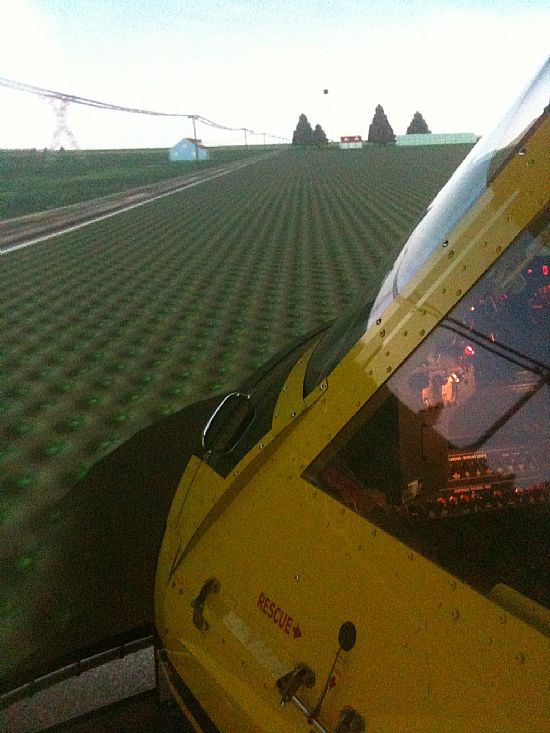ABOUT OUR SIMULATOR
New flight simulator at The Univeristy of Nebraska-Lincoln Pesticide Application Technology Laboratory. We are capable of replicating realistic airplane environments using our multi-purpose simulator and aid in nozzle selection and best application practices. Simulation may be adjusted to meet specific training requirements.
1, 2 and 3 Day Courses Available Taught by Professional Ag Pilots
In conjunction with safety and transition training, we are also able to include training on proper application techniques, which include:
- Swath guidance GPS training
- Obstruction awareness and avoidance
- Target crop and sensitive crop recognition
- Human and livestock exposure avoidance
- Proper drift mitigation practices
Simulator Design Features
• The simulator incorporates the latest in visual technology, including high fidelity graphics that are generated & displayed on to a single wrap-around screen designed to eliminate distortion. The resulting 235-degree out-the-window visual scene also shows the airplane’s wings & utilizes realistic sound & lighting systems to provide a realistic, comfortable & safe learning environment.
• Environmental changes in temperature, pressure altitude, humidity, wind velocity etc can be simulated with valid effects on airplane performance.
• Flight visibility can be adjusted from full day to full night conditions (with no discernable horizon) and local thunderstorm and lightning activity can be simulated.
Why train in a Simulator?
- Our simulator based training courses take place in an environment where there is no risk of physical harm or monetary loss.
- Pilots are exposed to a full range of emergency situations in the simulator which improves competency and confidence and reduces human error related accidents or expensive damage to turbine engines.
- Simulator based training substantially reduces the amount of time a pilot needs to reach or maintain a high standard of proficiency, the actual "learning time" per training hour is far greater than a real airplane, the operating cost per hour is far less than for the equivalent airplane, and training is not weather or daylight dependent. This makes our training courses very cost effective.
- Accident statistics also support the fact that pilots who train regularly in simulators have consistently better safety records than those that don't.
- RECOGNIZED BY SEVERAL MAJOR INSURANCE CARRIERS.

Normal Simulation
Normal simulation is primarily used for-
• Familiarizing pilots with the simulator & its handling characteristics
• Developing & evaluating pilot workload
• Developing & practicing normal airplane, power plant, and propeller handling procedures
• Developing safe & effective techniques for using GPS flight track guidance systems
• Evaluation of spray drift deposition models from aerial applications flown in the simulator
• Incident investigation

Emergency Simulation
A complete range of emergency profiles ranging from comparatively minor malfunctions to serious failures may be simulated
• Many of the emergencies demonstrated and practiced in the simulator cannot be replicated in a real airplane. Others cannot be replicated without risk to the airplane, its systems or occupants.
• A comprehensive range of training profiles may be simulated to demonstrate & practice upset recovery from unusual attitudes.

Simulator Construction & Components
The simulator utilizes an AT502 mid fuselage section & cockpit fitted with –
• Flight & engine controls
• Turbine-engine
• Fully controllable propeller with reverse thrust and feathering
• Flight and engine instrumentation
• Electrical system
• GPS flight-track guidance system
• 500-gallon hopper with mechanical type dump (jettison) lever
• Standard liquid spray system